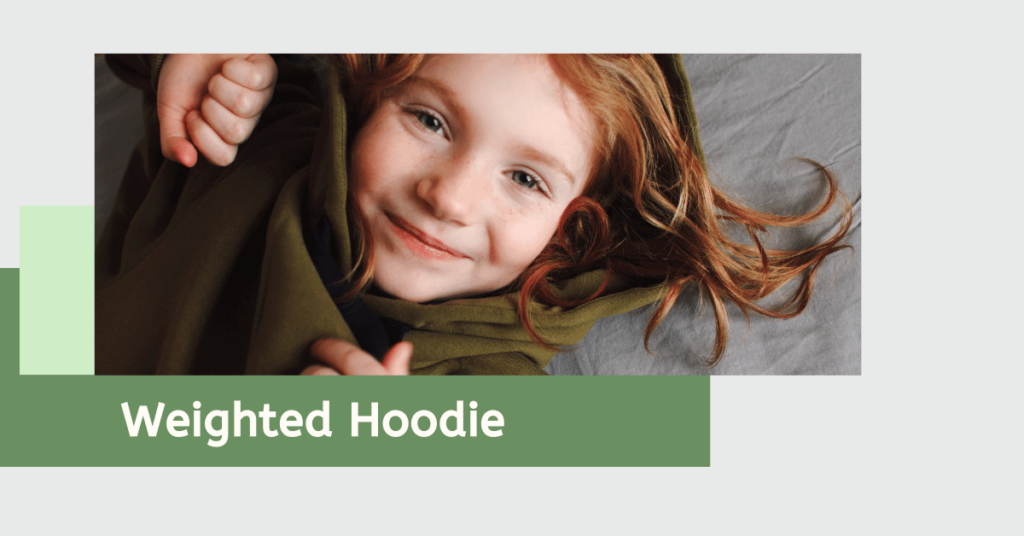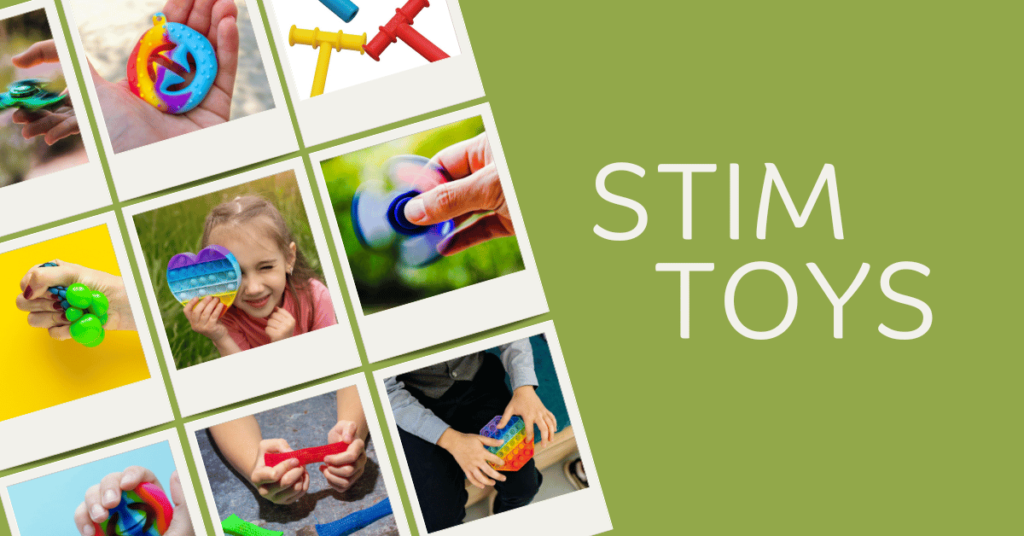Disclosure: This post may contain affiliate links. This means that if you click on a link and make a purchase, we may earn a commission at no additional cost to you. We only promote products we truly believe in, and your support helps us continue providing valuable content to our readers.
- I. Introduction
- II. Factors to Consider
- III. Types of Weighted Hoodies
- IV. Brand and Product Research
- V. Budget Considerations
- VI. How to Measure for the Perfect Fit
- VII. Tips for Introducing the Weighted Hoodie
- VIII. Maintenance and Care
- IX. Conclusion: Finding the Ideal Weighted Hoodie for Your Child
- X. FAQs (Frequently Asked Questions)
I. Introduction
Understanding the Importance of Weighted Hoodies for Special Needs
Weighted hoodies have become a valuable tool in supporting individuals with special needs. These include conditions like autism, ADHD, and sensory processing disorders. These hoodies provide deep touch pressure. It can help soothe and calm sensory-sensitive individuals.
Selecting the suitable weighted hoodie for your child is crucial. It is vital to ensure maximum comfort and effectiveness. This article will explore the factors to consider in selecting a suitable hoodie. Learn about the types of weighted hoodies available, sizing tips, and more.
II. Factors to Consider
Here are several crucial factors to help guide your decision-making process.
1. Sensory Needs and Preferences
Understand your child’s sensory needs and preferences. It is paramount when choosing the fitting weighted hoodie. Sensory profiles can vary significantly among individuals with special needs. Taking the time to recognize your child’s unique preferences is essential. Some children may find comfort in gentle, constant pressure. Others may require a more profound and intermittent input to soothe their sensory sensitivities.
Determine your child’s sensory preferences. Observe their reactions to different types of touch and pressure. Do they seek out heavy blankets or enjoy tight hugs? Are they more comfortable with a constant, gentle sensation or occasional, deep pressure? Engaging with sensory specialists or occupational therapists can be incredibly helpful. They can help in identifying these preferences accurately.
2. Weight and Pressure Options
Weighted hoodies offer a range of weight options, varying from 2 to 10 pounds. Selecting the appropriate weight is crucial. The suitability of the weight influences the effectiveness and comfort of the hoodie. Too much weight can overwhelm your child. Too little might not provide the desired sensory input.
To determine the right weight, it’s advisable to consult with a specialist. An occupational therapist or sensory specialist can assess your child’s sensory needs. They can recommend an appropriate weight range using various tools and assessments. They can gauge your child’s response to different pressure levels. They can help you make an informed decision.
3. Material and Comfort
Comfort is paramount when choosing a weighted hoodie for your child. Children with special needs can be sensitive to certain fabrics or textures. Choosing soft, breathable materials that won’t irritate their skin is crucial. Check the hoodie’s fabric composition to ensure it meets these criteria.
Additionally, pay close attention to the inner lining of the hoodie. It should provide a comfortable and even distribution of weight. It is to prevent any discomfort or pressure points. High-quality hoodies often feature soft, hypoallergenic materials. High-quality hoodies are usually designed with sensory comfort in mind.
4. Sizing and Fit
Ensuring that the hoodie fits correctly is essential for both comfort and effectiveness. An ill-fitting hoodie can be uncomfortable and may not provide the desired sensory input. To achieve the perfect fit:
1. Measure Accurately. Use a soft measuring tape to measure your child’s chest, waist, and hip circumference. Follow the manufacturer’s sizing guidelines for accuracy.
2. Consult the Sizing Chart. Most reputable brands provide sizing charts. Refer to these charts to help you match your child’s measurements to the right hoodie size. Remember that some weighted hoodies are designed to fit snugly for optimal pressure distribution. Other hoodies offer a looser fit.
3. Consider Growth and Flexibility. Children grow quickly. Choose a hoodie with some room for growth. Look for hoodies with adjustable features. Or consider a slightly larger size to accommodate your child’s changing body.
5. Durability and Maintenance
Investing in a durable weighted hoodie is essential, as it will likely see regular use. To ensure longevity and hassle-free maintenance:
1. Check Material Quality. Examine the materials used in the hoodie’s construction. Durable, high-quality fabrics and stitching are indicative of a longer lifespan.
2. Easy Cleaning. Review the manufacturer’s cleaning instructions. Most weighted hoodies are machine washable, but specific care requirements may vary. Choose a hoodie that fits your maintenance preferences and lifestyle.
By considering these factors in detail, you can make a well-informed decision. These can help you select a weighted hoodie that aligns with your child’s sensory needs. Select a hoodie that can provide the utmost comfort and effectiveness.
III. Types of Weighted Hoodies
When selecting a weighted hoodie, it’s essential to consider the different styles available. Each type offers unique benefits and functionalities.
1. Vest-Style Weighted Hoodies
Vest-style weighted hoodies are designed to resemble vests. They are a favored choice for many parents and caregivers. These hoodies are designed to be worn over clothing. They provide consistent pressure to the upper body. Here’s why they are a popular choice:
Ease of Use. Vest-style hoodies are effortless to put on and take off. It is an excellent option for children struggling with more complex clothing.
Focused Pressure. These hoodies concentrate the weight on the chest and back. They can be particularly calming for individuals with sensory sensitivities in these areas.
Subtle Design. The vest-style design is discreet. It makes it suitable for various settings, including school or social outings.
2. Full-Zip Weighted Hoodies
It combines the benefits of a traditional hoodie with the added sensory input of a weighted garment. Here’s what makes them a popular choice:
Convenience. The full-zip design offers ease when putting on or removing the hoodie. It can be advantageous in situations where quick adjustments are needed.
Versatility. These hoodies are suitable for various weather conditions. They can be easily layered over other clothing.
Deep Pressure. It provides deep pressure across the chest and back. It promotes a sense of security and comfort.
3. Pullover Weighted Hoodies
Pullover weighted hoodies offer a cozy and comforting option. Here’s why they are a suitable choice:
Warmth and Comfort. Pullover hoodies are ideal for colder seasons. They provide extra warmth and sensory input to the arms, shoulders, and upper body.
Continuous Sensory Stimulation. The pullover design ensures constant sensory stimulation. It can be soothing for children who crave consistent input.
Casual Style. These hoodies often have a simple and relaxed style. They are great for leisure activities and at-home use.
4. Customized Weighted Hoodies
For a truly tailored sensory experience, some companies offer customized weighted hoodies. Here’s what you need to know about them:
Personalized Weight. With customized hoodies, you can enjoy the flexibility. You can select the exact weight that suits your child’s sensory needs. This level of precision ensures the optimal calming effect.
Size and Style Options. You can choose the size and style that fits your child’s body shape and preferences. This customization ensures the hoodie is comfortable and practical.
Unique Designs. Customization allows you to pick from various designs, colors, and patterns. Your child can wear a hoodie that reflects their personality and style.
Consultation with Experts. Companies that offer customization often provide consultations with sensory specialists or occupational therapists. They can guide you in making the right choices for your child.
Customized weighted hoodies provide a level of personalization that can have significant benefits. They can ensure that the sensory comfort is met precisely.
The various types of weighted hoodies cater to different sensory needs. They are also available in different styles and for multiple occasions. Selecting the most suitable style depends on your child’s preferences and sensory sensitivities. You can also choose a style for specific situations where they will wear the hoodie. By understanding the unique features of each type, you can make an informed choice. You can choose one to enhance your child’s sensory experience and well-being.
IV. Brand and Product Research
When it comes to choosing a weighted hoodie, thorough research is vital.
1. Reviewing Customer Feedback
Read reviews and testimonials from other parents and caregivers. Get insights into the hoodie’s comfort, durability, and effectiveness. Real-life experiences can help you make an informed decision.
2. Seeking Recommendations from Specialists
Consult with occupational therapists, sensory specialists, or healthcare professionals. Consult with those who have experience working with special needs individuals. They can offer valuable recommendations based on your child’s unique needs.
3. Exploring Trusted Brands
Look for reputable brands known for their quality and commitment to special needs communities. Established brands often have a track record of producing reliable products.
V. Budget Considerations
While quality is essential, budget constraints may influence your decision.
Find Quality Within Your Budget. Search for hoodies that provide excellent value for the price. It’s possible to find well-made options at various price points.
Weigh Cost vs. Long-Term Value. Consider the long-term benefits of a quality-weighted hoodie. Investing in a durable, effective product may be more cost-effective in the long run.
VI. How to Measure for the Perfect Fit
Ensuring that the weighted hoodie fits well is paramount for comfort and safety. An ill-fitting hoodie can cause discomfort. It can limit movement and can diminish the sensory benefits it offers. To achieve the perfect fit, follow these steps:
1. Taking Accurate Measurements
Measure Chest, Waist, and Hip Circumference. Begin by measuring your child’s chest, waist, and hip circumference. These measurements are essential. They ensure that the hoodie provides the right amount of pressure and coverage. Follow the manufacturer’s guidelines for where to place the measuring tape. Check their guidelines on how to measure each area accurately.
Use a Soft Measuring Tape. Using a soft measuring tape rather than a rigid one is crucial. A soft measuring tape is more flexible and conforms to your child’s body. It results in more accurate measurements. You can use a piece of string if you don’t have a soft measuring tape. You can measure it against a ruler or a rigid measuring tape.
2. Considering Growth and Flexibility
a. Keep in Mind Growth. Children grow rapidly. It’s essential to consider their growth when selecting the correct size. While you want the hoodie to fit well now, anticipating some growth is also good. Look for hoodies that have some room for growth or adjustable features. It will extend the useful life of the hoodie and save you from having to purchase a new one too soon.
b. Consult the Sizing Chart. Most reputable manufacturers provide sizing charts specific to their products. Consult these charts to determine the size corresponding to your child’s measurements. Pay attention to any notes or recommendations provided regarding fit and sizing. Remember that some weighted hoodies are designed to fit snugly to provide even pressure.
c. Factor in Clothing Layers. Consider what your child will wear underneath the weighted hoodie. Consider this when selecting the size if your child wears thicker clothing or multiple layers. You’ll want to ensure enough space for layering without compromising comfort.
d. Adjustable Feature. Some weighted hoodies come with adjustable features like elastic waistbands or drawstrings. These features can help you fine-tune the fit. They can accommodate your child’s specific body shape and preferences.
With these, you can choose a weighted hoodie that fits comfortably and effectively. Remember that a well-fitting hoodie can help enhance sensory input. It can also ensure that your child feels at ease while wearing it.
VII. Tips for Introducing the Weighted Hoodie
Introducing a weighted hoodie should be approached with patience and care. This is especially true for children with sensory sensitivities or special needs. A gradual introduction is vital in ensuring your child feels comfortable and eventually benefits from the sensory input the hoodie provides. Here are some valuable tips for introducing the weighted hoodie effectively:
1. Gradual Introduction
Starting the process gradually is essential. It allows your child to acclimate to the sensation of wearing the hoodie at their own pace. Here’s a step-by-step approach:
Short Sessions. Begin by having your child wear the hoodie for short periods. Have them wear it for 10-15 minutes during activities they enjoy. It could be while watching a favorite TV show, playing a game, or reading a book.
Observe Their Response. Pay close attention to how your child responds during these initial sessions. Look for signs of comfort or discomfort. If they express any discomfort or resistance, remove the hoodie immediately. You can then try again later.
Increase Wearing Time Gradually. Over time, gradually increase the duration of wear. Do this as your child becomes more accustomed to the sensation. Extend the wearing time by a few minutes for each session. Always respect your child’s comfort level.
Consistency. Maintain a consistent schedule for introducing the hoodie, and be patient. Some children may take longer to adapt, while others may embrace it more quickly.
2. Building Comfort and Trust
Creating positive associations with the weighted hoodie is crucial. It is to ensure your child feels safe and secure while wearing it. Here’s how you can build comfort and trust:
Choose Enjoyable Activities. Use the weighted hoodie during activities your child enjoys, whether playing with their favorite toys or engaging in sensory play. You can also use them while spending quality time with you. Try to associate the hoodie with positive experiences. It can help your child view it more favorably.
Incorporate it into Sensory Routines. Most children already have sensory routines or calming activities. Consider incorporating the weighted hoodie into those routines. It can help them associate the hoodie with relaxation and comfort.
Praise and Encouragement. When your child wears the hoodie, offer praise and encouragement. Positive reinforcement can be very effective. It can reinforce the idea that the hoodie provides comfort and security.
Respect Their Choices. Be mindful if your child expresses discomfort. Or if they don’t want to wear the hoodie during a particular session. Respect their choices. Forcing them to wear it can lead to negative associations. Instead, try again later or on a different day.
Be Patient and Supportive. Understand that every child adapts at their own pace. Be patient and provide emotional support throughout the process. Reassure your child that they are in control. Assure them that you are there to support them.
These tips can help ensure a smoother transition for your child as they use the weighted hoodie. It can help your child enjoy its calming and sensory-regulating effects.
VIII. Maintenance and Care
Proper care and maintenance will prolong the life of your child’s weighted hoodie.
Cleaning Instructions. Follow the manufacturer’s cleaning instructions to keep the hoodie clean and hygienic. Most weighted hoodies are machine washable, but specific care requirements may vary.
Ensuring Longevity. Regularly inspect the hoodie for signs of wear and tear. Repair or replace it as needed to maintain its effectiveness.
IX. Conclusion: Finding the Ideal Weighted Hoodie for Your Child
Choosing the perfect weighted hoodie for your special needs child requires careful consideration. It includes the child’s sensory needs, weight preferences, materials, etc. Research brands, measure for the right fit, and introduce the hoodie gradually. With these, you can provide your child with a comforting and effective sensory tool.
X. FAQs (Frequently Asked Questions)
Can a weighted hoodie help with anxiety in children with special needs?
Many parents and specialists have found that weighted hoodies can help reduce anxiety. It can provide a sense of security for children with special needs.
What is the recommended weight for a weighted hoodie?
The recommended weight varies depending on your child’s sensory needs. Consult with a sensory specialist or occupational therapist to determine the appropriate weight.
How do I clean and maintain a weighted hoodie?
Follow the cleaning instructions provided by the manufacturer. Most weighted hoodies are machine washable. But it’s essential to check for specific care requirements.
Can my child wear a weighted hoodie all day?
It’s generally recommended to introduce the hoodie gradually. Allow your child to wear it for short periods at first. Consult with a specialist for personalized guidance on usage.
Are there specific brands known for quality weighted hoodies for special needs children?
Several reputable brands specialize in sensory-friendly products for special needs individuals. Research and read reviews to find brands with a strong track record.



